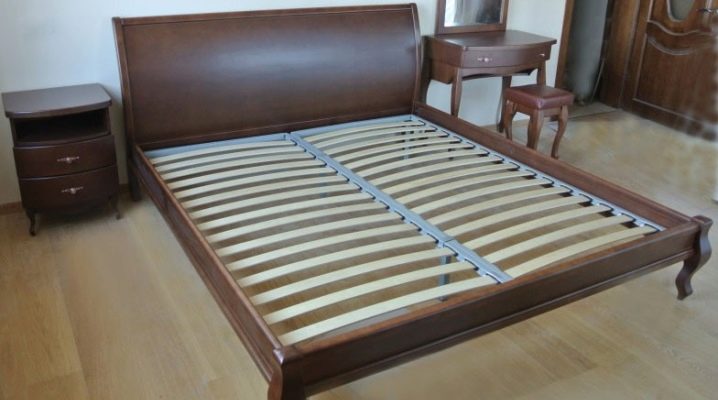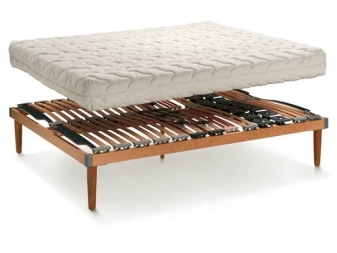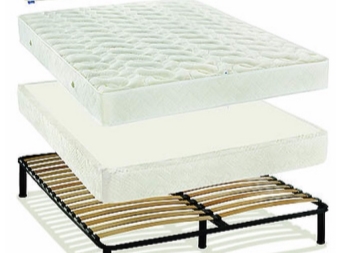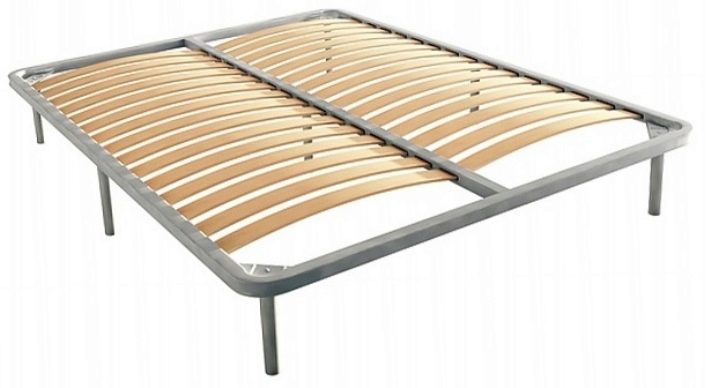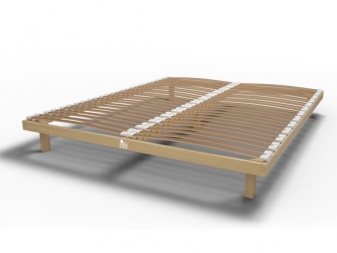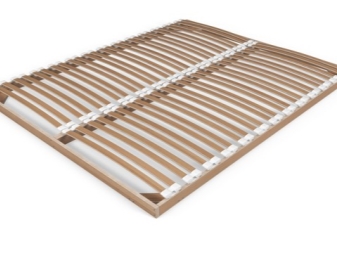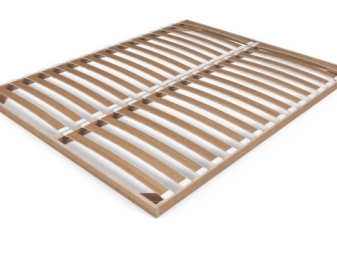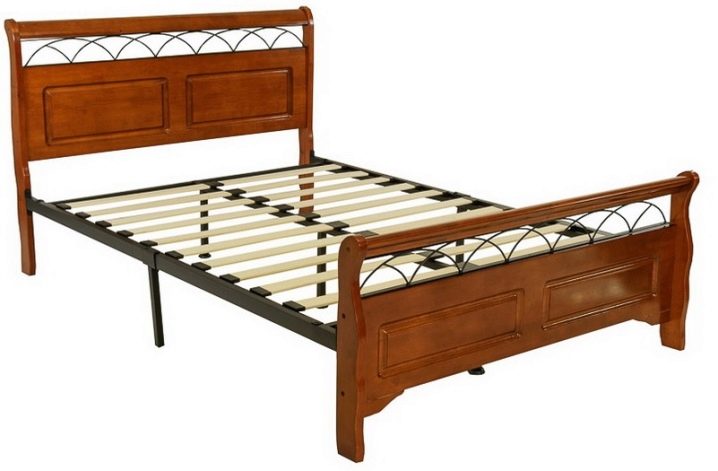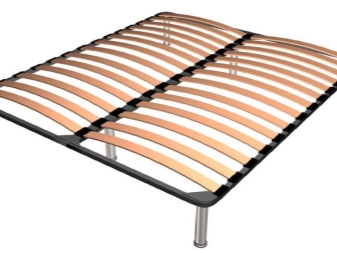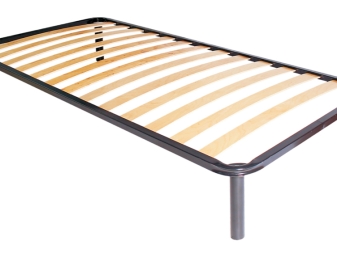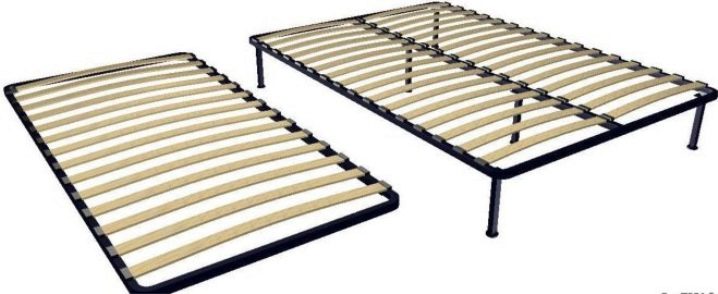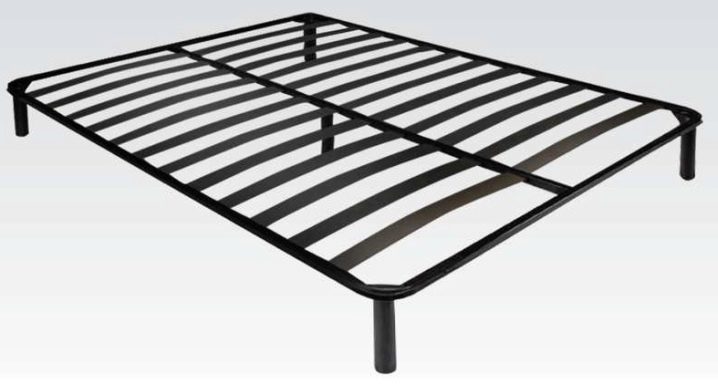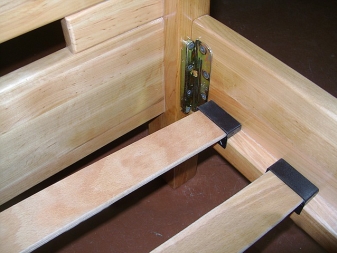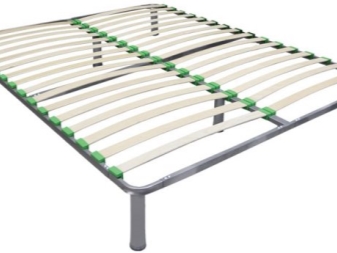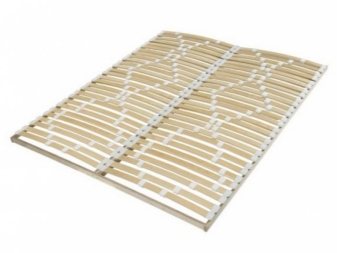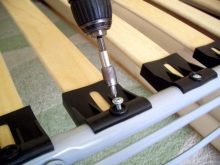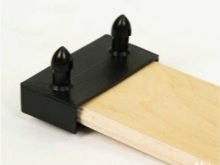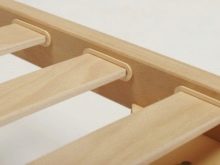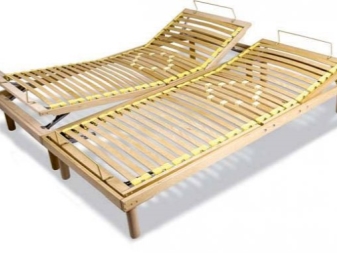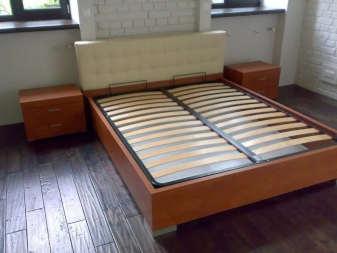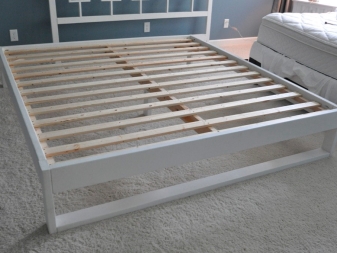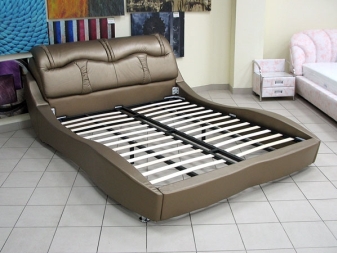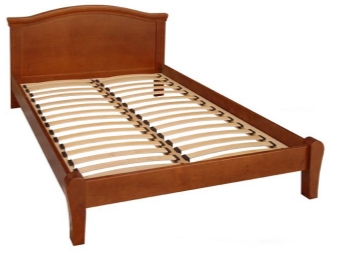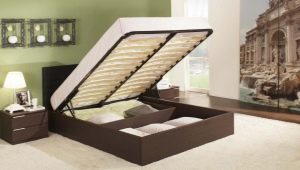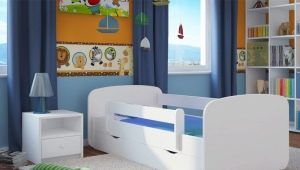Orthopedic bed base
There is nothing better than a strong and healthy sleep after working days. And in order to sleep was as comfortable as possible, you need to take care of the quality of the bed. Surely no one will argue that no matter how comfortable modern sofas are, they are still far from a full bed. This advantage becomes especially evident when it comes to orthopedic characteristics.
It is no secret that orthopedic mattresses, capable of taking shape that corresponds to the curves of the body of the person resting, are becoming increasingly popular. However, not everyone knows that for their effectiveness it is also necessary to take care of a reliable bed base.
Beneficial features
First of all, the base of the bed, which consists of a solid frame and the so-called lamellae, is necessary to improve the anatomical qualities of the mattress of your choice. This is one of the main reasonsaccording to which the majority of manufacturers of bedroom furniture no longer offer their customers beds with a standard lattice or flat base. Usually the main frame with lamellae is used as a constituent element. It forms the inner base of the bed, in effect filling its inner space.
In addition, this basis in some situations, if it was purchased separately, can be removed from the furniture and can be used as a bed.
The features and advantages of such an element are determined by its structure. Typically, the base for an orthopedic mattress is a rectangular frame made of wood or even metal, which is equipped on top with a grid of special elastic slats - lamellae. Lamellae can be made of any elastic material, however, the tree is considered to be the “gold standard”, in particular, some species, for example, beech, birch, bamboo. Of course, not solid material is used, but its special bend-glued form, which allows several curved lamellae to level off under the weight of a sleeping person.
Thus, a well-chosen base for a bed under an orthopedic mattress has the following useful properties:
- Such a lattice base ensures additional free air circulation in your bed, which, in turn, ensures hygiene;
- The orthopedic effect is greatly enhanced, and indeed it becomes possible. In most cases, the poor base of the bed negates the anatomical properties of your mattress, but a good lamella base ensures even weight distribution and body support;
- Compared to conventional steel mesh, such a base not only maintains the orthopedic quality of the furniture, but also guarantees safety for health, being made from natural environmental materials;
- Features of the structure provide a high margin of safety and, consequently, a longer service life;
- The orthopedic basis easier and mobile;
- Maintains more weight. High-quality base of the slats can withstand the load in the range of 100-150 kg per bed.
Design features
The basis of this design, as a rule, is represented by a fairly simple rectangular frame, which can be supplied separately for the bed or be built into it initially. From above, the frame is covered with a special grille, which can be mounted with a plunge or removable method and consists of separate slats - lamellae, arranged with the convex side up, that is, towards the sleeper. The special elastic structure of the lamellae allows them to straighten out under the body, due to which a more uniform distribution of weight occurs, and the mattress practically does not sag, retaining its softness and elasticity.
As already mentioned, fasteners for supporting brackets, the so-called lato-holders, can be of two types: mortise or overhead, that is, removable. Removable versions that, in turn, can be made either from plastic or from natural rubber are considered more versatile. Recently rubber rubber holders are especially appreciated, as they provide a softer and more reliable fit, which is especially important for mattresses with a thickness of up to 20 cm. In case your mattress is much thicker, then the option of lato holders can be neglected when choosing.
Modern foundations may surprise with their additional features.Many of them are equipped with all sorts of frame transformation options. It allows you to change the shape, for example, to raise part of the base at the head or from the side of the legs. Similar mechanisms can be completely manual or be supplied with the electric drive.
Also, some models provide the ability to change the rigidity of the base along the entire length or in a certain area. Especially such options are useful for people who suffer from chronic diseases of the spine or overweight.
Any frame can be located inside the bed itself on special fasteners - these are the so-called liner frames, or on their own fixing legs. Most of the double models are equipped with six legs: two pairs in the corners of the frame and two - in the central part.
Modern single versions instead have five supports. One additional is installed exactly in the middle of the frame, where the transverse internal web is located. This allows you to reduce and properly distribute the load on the grid. Also particularly comfortable and mobile are the models with retractable legs or collapsible base, which can be suitable even for a double bed.
Dimensions
Usually, manufacturers offer standard proportions of orthopedic bases that are suitable for any single or double bed. The height varies depending on the model or can be completely oriented to a particular bed. You can usually find the base with the parameters 80x200 or 90x200 cm, 120x200, 120x190 cm, 140x200 cm, 160x200 and 180x200 cm.
Do not forget that the base is a rather individual element, so it is easier and safer to order from the manufacturer a variant made to your needs not only considering the size, but also the materials used, which will seem to you the most suitable in price and quality.
Types of frame
Today, the choice of frame material is not so big: metal or wood. Until now, these two materials demonstrate the best indicators of quality and endurance, but they still have their own advantages and disadvantages.
For example, a wooden frame has such positive qualities as compared to metal:
- Lighter weight;
- Most often happens folding. Such a framework is much easier to transport into a room with a narrow doorway and assemble on site;
- Made from natural ecological raw materials;
- May provide additional air circulation at the bed.
However, it is worth noting that the metal frames have a reinforced base. Usually they are a frame with walls no thicker than 1.2 - 1.7 mm. Unlike a wooden structure, such a model is always sold in assembled and “welded” form, that is, it is more bulky, heavy and not so convenient for transportation. On the other hand, it is metal bases that have a high service life, which reaches 20 years.
In addition, metal structures can be more technological. They are often equipped with various mechanisms for automatic or manual adjustment of the bed base inclination. This may seem to be overkill, however, such transforming beds have additional free space for storing bed linen, which is very practical.
Types of slats and holders
As mentioned earlier, the key value for an orthopedic foundation is not so much the skeleton as the lamellae themselves - the slats that form the lattice.Thanks to their curved design, the weight of the person lying on the bed is distributed evenly, which allows to enhance the orthopedic effect of the mattress, prolong its life and ensure a more comfortable sleep in general.
It is believed that these orthopedic slats should be made of bamboo or oak.
At the same time, it is important that they are not straight, but located with a convex part upwards. Of course, today there is a cheaper and more affordable version of lamellas, for example, made of birch, walnut, beech, and any other available wood. Also, plastic is often used as the base material, but it has a shorter service life and is not always able to provide a sufficient level of rigidity. It is strictly necessary to avoid offers to purchase an orthopedic base with metal lamellae!
It is also important to take into account the type of fastening of the lamella to the frame, that is, the so-called lato-holders. Of course, there are variants of orthopedic bases in which the lamellae are embedded, that is, in fact, firmly fixed in the frame.This can provide a longer service life, however, eliminates the possibility of self-replacement of the rail in case of breakage or when adjusting the stiffness.
Usually latoderzhateli can be made of plastic or rubber. Rubber retainers are more valuable. They have additional cushioning, provide a soft landing of the lattice and eliminate the possibility of unpleasant squeak of the bed. In addition, even the simplest plastic clips can provide the ability to manually adjust the rigidity of the base.
In general, there are three options for latoders:
- Mortise are initially harvested groove under the slats of a certain width. Such clamps are commonly used in metal framework models;
- Overhead is a pre-fabricated box-mount made of plastic, metal or rubber, which is equipped with two locking pins. Thus, they are worn at both ends of the lamella and "snap" on the frame of the frame;
- The so-called "aiming" holders are most often used for wooden frames. They are a special fittings from the fixing box and a separate corner holder.The box is put on each side of the lamella, and then with the help of a corner and a special stapler it snaps onto a wooden frame.
What to look for when choosing?
When choosing an orthopedic base for a bed, you should be especially careful, as it is possible to get a suitable option that will ensure a strong and healthy sleep only by paying attention to all the details.
Otherwise, a poorly chosen model may not only be useless, but even harm your health, which is especially important for people with chronic spinal diseases and overweight.
Be sure to pay attention to the following points:
- First of all, carefully check all dimensions of the base. Height, as a rule, should be not less than 50 cm. In general, all parameters should be considered on the basis of the dimensions of your bed;
- The quality of the lamellae is crucial. Make sure they are made from natural material. In addition, there should be no obvious signs of marriage on them, such as burrs, cracks, knotty areas;
- The number of lamellas per bed should not be less than 15;
- Pay attention to the frequency of the rails, as well as their thickness and width. Usually lamellae should have a thickness of at least 0.8 cm and a width of 5.3 to 6.8 cm. At the same time, they are located at a distance of 6-8 cm from each other;
- It is best to choose a base model in which the clips allow you to adjust the stiffness of certain areas of the bed, manually moving the individual slats;
- Carefully select the type of frame, based on their needs: metal models have a long service life, wooden - light, environmental, mobile;
- Give preference to high-quality rubber pad holders;
- Remember to check the orthopedic foundation for the likelihood of squeaking. Pronounced squeaking is the first sign of the poor quality of such furniture;
- For a spring mattress, a lattice with wide, not densely arranged lamellae is best suited. Too rigid models cannot be chosen for strong mattresses, for example, made of coconut coir.
How to do it yourself?
The simplest base for a bed can be made independently according to the schemes, cutting a suitable bottom, headboard and footboard from the laminated and polished chipboard, supporting sides.All of these elements are fairly easily fixed to each other using screws, but you should not forget about the strut on which the base will be laid under the mattress.
Of course, the base is best made not flat, but from lamellae. They can be purchased separately from the manufacturer with suitable rubber or plastic retainers.
The main structural elements are considered to be footboard, headboard and external bumpers. Once they are ready, you can begin assembling the base on the place where the bed will be located later. In the assembled frame, the so-called central bar is first placed, which will serve as a support, on which the base is already placed under the mattress. Support, timber and holders are fixed among themselves sequentially with the help of screws, thus forming a stable wooden structure.
Do not forget that the dimensions of the base under the mattress should be somewhat smaller compared to the elements of the body, since it must be placed freely in it in order to be able to be replaced later.
Of course, it is much easier to purchase a ready-made frame in a disassembled version from the manufacturer, since all the components, as well as a detailed assembly diagram, will be attached to it.Otherwise, you will have to independently carry out all the blanks on the basis of the dimensions of the frame you need and separately purchase slats with holders.
Reviews
The advantages of the orthopedic base under the mattress over the flat bed are obvious. Most of the buyers who have already managed to test on themselves high-quality lamella grids mark a significant increase in sleep comfort. Natural wood lamels improve the anatomical properties of the mattress, allowing it to more accurately repeat the position of the body, as well as extend its life.
Also worth noting is the fact that modern bases under the mattress are endowed with additional practical functions. The grille allows you to change the inclination of the headboard or footboard, and also adds extra space to your bed to store bed linen or other necessary things.
A high-quality orthopedic base for a bed is the same necessary element of a healthy sleep, as well as natural anatomic mattresses. With the right choice, you will provide yourself with quality rest after a hard day’s work, which will make you feel awake and full of energy the next morning!
About what kind of rack grounds, see the following video.
